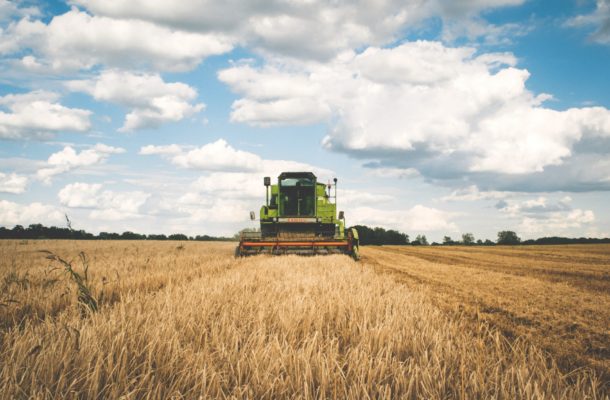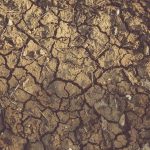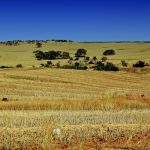Hot, dry summer strains farming confidence

Australia’s farmers have begun the year on a cautious note, with the hot, dry summer in many parts of the country taking a toll on national sentiment in the rural sector.
In its first survey for 2018, the latest quarterly Rabobank Rural Confidence Survey – released today – has found the net confidence indicator, measuring sentiment levels among the nation’s farmers, has dropped back over the past quarter to one of its lowest readings in four years.
Concern about lack of rainfall emerged, once again, as a ‘handbrake’ on farmers’ overall outlook for the year ahead. However, significant rain which has since fallen across parts of the eastern states – including drought-stricken areas of central western Queensland over the weekend – was giving some renewed cause for optimism about the seasonal outlook, said Rabobank Australia CEO Peter Knoblanche. And much would hinge on further rainfall in coming weeks.
The survey, completed last month, found more Australian farmers had a negative outlook for the agricultural economy over the next 12 months than those with a positive view, with the net confidence indicator dipping into negative territory to -2 per cent, from 16 per cent in December last year.
The percentage of the nation’s farmers with a negative view stood at 21 per cent (up from 12 per cent last quarter), while 19 per cent expected conditions to improve (down from 28 per cent). More than half however (56 per cent) were expecting conditions to remain relatively unchanged in the year ahead.
Announcing the results of the latest survey, Mr Knoblanche said while the season was still uncertain, fundamentals for the ag sector remained bullish with most commodity sectors looking at another year of strong prices.
“While farmers may be indicating some nervousness about their short-term prospects when it comes to seasonal conditions, there is plenty of evidence that long-term confidence in the sector is not just sound, but robust,” he said.
“You only have to look at investment activity, both from within and outside the sector, to get a gauge of how Australian agriculture is faring, and the survey found a quarter of farmers are actively looking at increasing their investment in the coming 12 months,” he said.
An anxious wait
Mr Knoblanche said with many agricultural commodities experiencing sound market conditions – underpinned by positive global economic factors, improved market access, low interest rates and some softer input prices (such as fertiliser and irrigation water) – it was the “anxious wait” for the autumn break that had impacted farmer confidence this survey.
“Across much of the country it has been a hot, dry summer and, while this has not been atypical in many areas, it was for much of Queensland, which had remained desperately dry during their usual ‘wet season’,” he said. “However, significant rainfall in recent days will be giving many farmers hope that seasonal conditions are swinging back more in their favour.”
Concern about the hot, dry summer weather in Queensland was reflected in the survey results, with the state’s rural confidence dropping to its lowest level in four years.
In contrast, Western Australia recorded some good rain over summer, which saw farmers in the west “bucking the national trend” and reporting a strong upswing in confidence.
With the season front-of-mind for many, Mr Knoblanche said 36 per cent of the nation’s farmers who were expecting conditions to worsen over the next 12 months cited the dry season as reason for their pessimism – with seasonal conditions particularly concerning for those in New South Wales and Queensland at 55 per cent and 45 per cent, respectively.
“Thankfully much of eastern New South Wales received good falls in the last weekend of February, with many recording their best drop of rain for many months. And there has recently been significant rain across much of Queensland, including drought-stricken areas in the central west,” he said.
Concern about commodity prices was also cited as a cause for pessimism by 48 per cent of farmers who had a negative view on the coming year, however this was predominantly dairy and sugar producers.
“The outlook for farmgate milk prices in the 2018/19 season is a little uncertain, although prices are expected to remain at profitable levels, as global supply pressure is building on markets,” Mr Knoblanche said. “And in sugar, the global market remains oversupplied, exerting downward pressure on prices.”
Meanwhile sentiment remained strong in the grain and sheep sectors, with growers hopeful the grain market would continue to strengthen, while the returns for wool, lamb and mutton remained historically high.
“Sheep graziers are having their ‘time in the sun’, with the smaller domestic sheep flock, together with strong export demand, expected to underpin prices again this year,” he said.
Farm business performance and investment
Despite the drop-off in confidence levels, farmers were relatively more optimistic about the prospects for their own farm incomes in 2018, although expectations were slightly down on the December quarter. Overall, 29 per cent of farmers expected higher gross farm incomes in 2018, down slightly from 32 per cent with that view in the previous survey.
While a further 46 per cent expected a similar financial result to last year.Reflecting the more bullish longer-term sentiment prevailing across the agri sector, investment intentions remained unshaken, Mr Knoblanche said, with 25 per cent of the nation’s farmers looking to increase their farm business investment.
Western Australian farmers had the strongest expansionary intentions, with 35 per cent planning to increase investment, primarily in on-farm infrastructure. The investment appetite was also strong in Tasmania, with 68 per cent of those planning to increase investment directing it towards irrigation and water infrastructure.
Growing appetite for farm expansion was also evident, with 28 per cent of those primary producers looking to increase investment intending to purchase additional property in the coming 12 months – with the highest appetite in Victoria, Western Australia, South Australia and New South Wales.
“The strong investment appetite is creating robust demand for property purchase in many regions, with the strength in land markets expected to continue in 2018,” Mr Knoblanche said.
The State picture
Confidence fell back in most states of Australia, except Western and South Australia, with farmers there, on the whole, expecting conditions to remain similar to last year, or improve.
Western Australia posted the strongest upswing in sentiment, Mr Knoblanche said, supported by some decent rain events, although the rain was damaging in parts of the western Kimberley.
“Confidence in the west is now at a two-year high, while in South Australia it is at its highest level since early 2017,” he said.
By surveyed commodity sectors, grain and sheep producers were the most bullish about their prospects for the coming year, while confidence was well back in sugar and dairy and to a lesser extent, beef and cotton.
Note on methodology
The Rabobank Rural Confidence Survey questions an average of 1000 primary producers across a wide range of commodities and geographical areas throughout Australia on a quarterly basis. The survey has been conducted by an independent research organisation interviewing farmers throughout the country each quarter since 2000. The next results are scheduled for release in June 2018.








